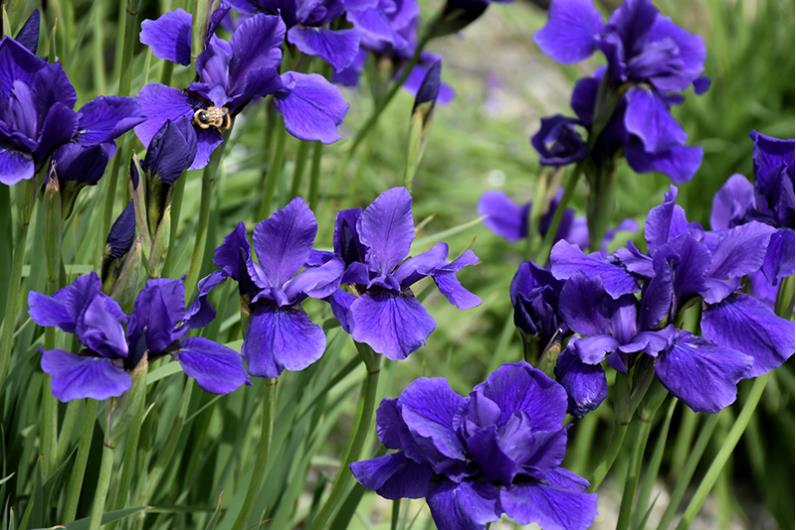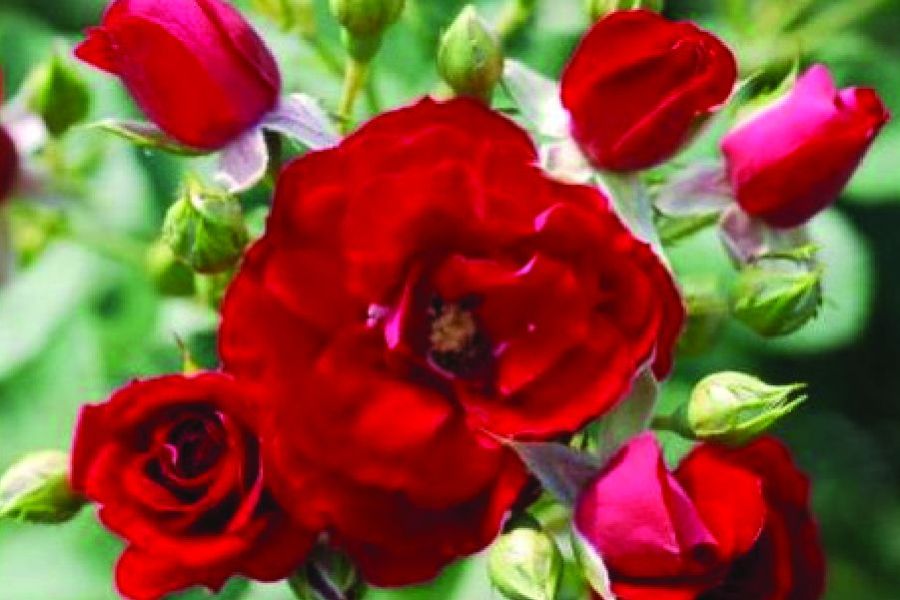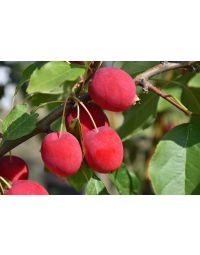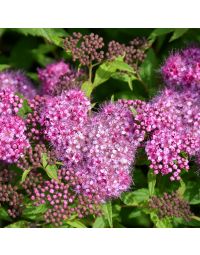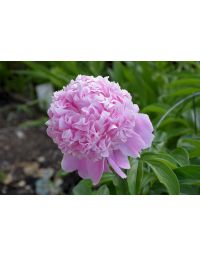Top Ten Heirloom Plants for Minnesota
Karen is our resident rosarian. She also has numerous heirloom plants. While the exact definition of what makes a plant an heirloom is subject to often fierce debate, a great way to think of these historic plants are cultivars which have been grown, cared for, selected, and handed down through generations of home growers. A plant that has stood the test of time for many decades, or often hundreds of years means they are tough, easy to grow, generally disease resistant, long lived, and often divide and multiply. Heirloom edibles often have fantastic, complex flavors, which you might not find in modern hybrids which are bred to be shelf stable first, and tasty second or third. Heirloom ornamentals have color, fragrance, and growth shapes that have wowed in the garden generation after generation. Plant yourself a piece of history. Plant an heirloom!
Note: Click on the links for pictures and more information.
Dolgo Crabapple tree- A stunning crabapple from Russia bred in 1897, this crabapple tree puts up with the absolute worst winter can throw at it and is stunning during the rest of the year. In spring, the tree is smothered in fragrant white flowers. Come Autumn, large plum sized edible crabapples decorate the tree. This is a big tree 25’ high by 25’ wide. Hardy to zone 2.
PJM Rhododendron- One of the finest blooming shrubs for shade, this lovely evergreen rhododendron was bred in 1945. Orchid purple flowers cover a shrub that can reach up to 6’ at maturity- but this slow grower will take a long time to get there. Provide this shrub with partial sun to shade, and very acidic soil. You will be rewarded with four seasons of interest. Hardy to zone 4.
Monge Lilac- One of the best French lilacs, produced by famous plant breeder Victor Lemoine in 1913. Monge has deeply saturated purple blossoms, which open royal purple and fade to a softer purple pink. Deeply fragrant blossoms waft their perfume on the breeze. Patience is a virtue with Monge, as this shrub is slow to bloom when young. Like most French lilacs, this is a big shrub, and can reach up to 12’ tall and wide at maturity. Hardy to zone 3.
Haralson Apple Tree- An absolute classic apple produced by the University of Minnesota in 1922. Haralson is a tough apple, fairly resistant to disease, stores well and gives you the local apple orchard taste you grew up with. A fantastic addition to the backyard orchard, our trees are on semi-dwarfing rootstock that matures to about 15’ high and wide. Hardy to zone 3.
Anthony Waterer Spirea- A more eponymous landscaping shrub for Minnesota you cannot find. Anthony Waterer Spirea is a beautiful magenta pink spirea that has been with us since 1890. It is a classic, carefree shrub for every landscape. Put it in a sunny spot and walk away, this shrub does everything for you. Hardy to Zone 4.
Snowball Viburnum- This gorgeous, shade tolerant viburnum was first recorded growing in European gardens in 1554. A fixture at Thomas Jefferson’s Monticello Garden, this 12’ tall shrub is covered in white, hydrangea like pom poms of flowers in June. A fantastic plant for Minnesota gardens, it needs little care, likes shadier spots, and serves beautifully as a hedge or specimen plant. Like most viburnum, it has good autumn color. Zone 3-9.
Caesar's Brother Siberian Iris- This rich purple Siberian iris bred in 1932 is the quintessential pass-along plant. With it’s long, elegant grass like foliage, and saturated purple flowers, Caesar’s Brother pairs beautifully with peonies, roses, spirea, and other pink flowering shrubs. Very easy to grow and care for, it enjoys wet soils other plants might not tolerate. The hardest problem it will give you is what to do with the extra rhizomes you get when a stand is mature and needs splitting. Very tough, extremely beautiful, and hardy to zone 3.
Lily of the Valley- By far the oldest plant on the list, Lily of the Valley is mentioned in the bible. This ground cover works beautifully to edge out weeds in shady beds. The real show starts in early May, when the tiny, white, deeply fragrant, bell-like flowers make their appearance. Bring some in to enjoy in a vase, where their delicate beauty can be fully enjoyed. Be careful though- all parts of Lily of the Valley are toxic when ingested. An absolute classic, hardy to zone 3.
Common Chive- Another plant that has been included in gardens since the Middle Ages, chives are both beautiful and delicious. The thick, short, grassy stems and purple puffy flowers make a fantastic accent to sunny or partially sunny garden beds. The onion smell chives produce helps to ward off curious critters from other, more delicate plants you don’t want getting chewed. Chives can also help deter aphids and mite infestations! A fantastic plant with so many uses both in the garden and in the kitchen. Hardy to Zone 3.
Sarah Bernhardt Peony- This stunning plant is probably the flower you think of when someone mentions the word “Peony”. Sarah Bernhardt was named after the famous stage actress when it was released in 1906. The flowers are so gorgeous, it quickly earned its designation as the world’s most popular peony- both for florists, as well as in the garden. This plant remains the most frequently planted peony on the planet- and with good cause- the pink petals and deep fragrance, combined with ease of care, long life, and cold hardiness make it a top choice for any garden. Hardy to Zone 3.
